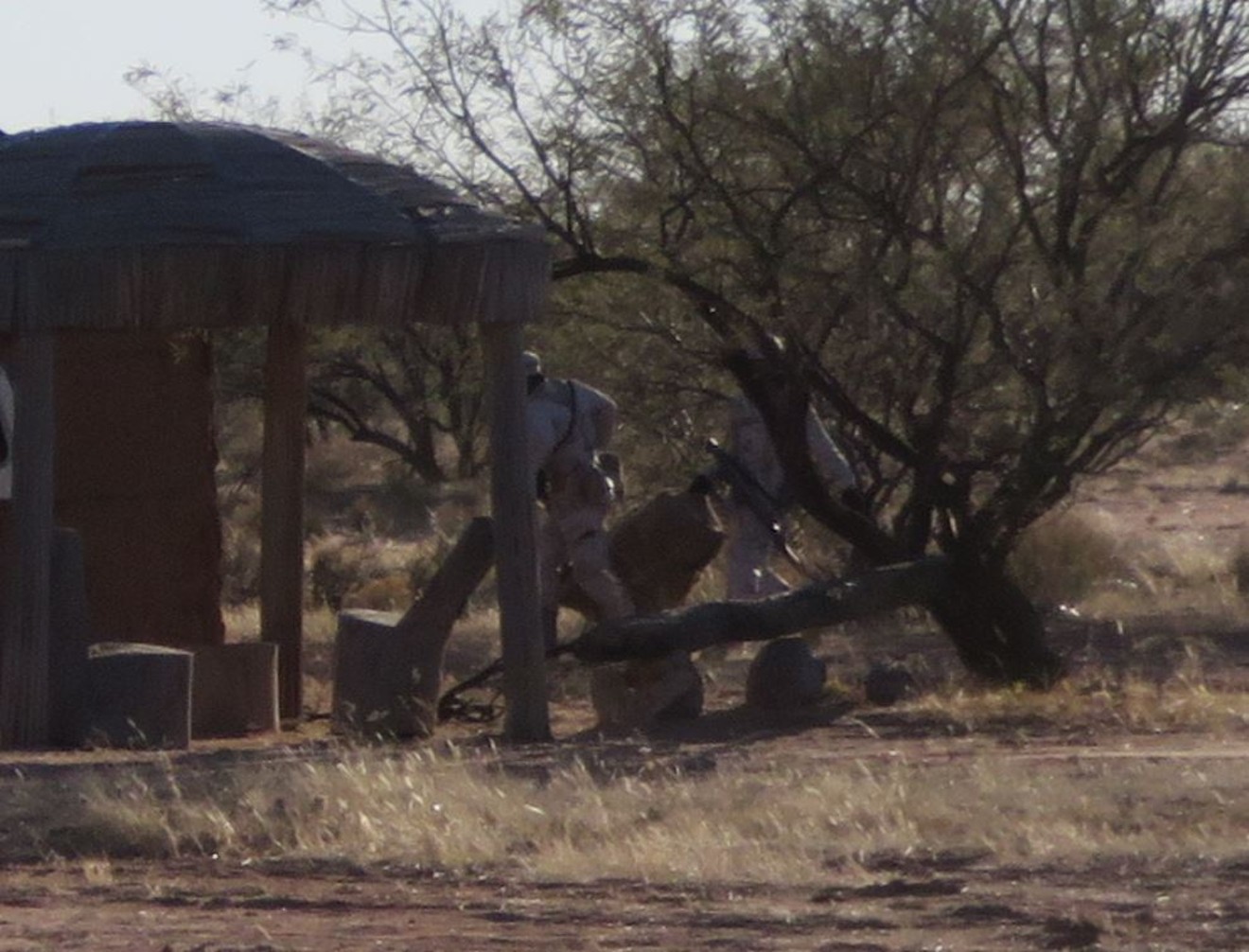New Times took the photos at about 4:30 p.m. on January 28, 2017, while reporting on the Tohono O'odham Nation.
The uniformed men's activities were very suspicious and looked like drug-smuggling activity. The Mexican Consulate in Phoenix blew off questions about the photos, never providing any alternative explanations for what was happening in the photos.
Still seeking answers, New Times showed one of the photos to activist Laiken Jordahl on Wednesday. He agreed they seem to show criminal activity.
"It wouldn’t surprise me if they were helping move pot (usually dried-up low-quality ditchweed) across the border by staging it there for others to move north," Jordahl said in an email.
Jordahl is currently a fellow with the National Park Service, and is a former Legislative Fellow for the U.S. House of Representatives. He's a passionate advocate "for communities, critters and culture in our borderlands," as online bios state, and his recent focus has been on Trump's planned border wall and "militarization" by U.S. border authorities.
The unusual incident occurred at the San Miguel Gate, a border entry point only Native Americans can use. As New Times watched, two military-style vehicles rolled up near the small house standing about 200 yards south of the gate, in Mexico. Carrying assault rifles, several of the men in camouflage formed a cordon and appeared to be providing security. Others proceeded to load green bags or backpacks into the house. The house itself seemed unoccupied.
Whether the men saw photos being taken could not be determined. The men seemed unconcerned about anything on the north side of the border. Yet a Border Patrol van was parked on the north side of the border. Also, TV journalist Pedro Ultreras of Univision was also at the San Miguel Gate at that time, conducting an interview of a local Tohono member. Univision apparently didn't see the uniformed men, and didn't include anything about the incident in their broadcast report, which can be seen on YouTube. Ultreras didn't respond to a request for comment.
New Times asked several Tohono members about the photos while on the reservation last year. They agreed it was probably "the cartel."

The bags carried by the soldiers to the apparently unoccupied house seemed very heavy, judging by how they were carried.
Ray Stern
Jordahl added that "Mexican military, just like our own customs and border patrol agents, often get paid off to help ferry loads through."
While that's true, U.S. Border Patrol agents typically don't operate as a group while conducting corrupt acts. More importantly, such corruption gets investigated in the United States, whereas in Mexico, police and prosecutors don't typically investigate cartel activity out of fear of being murdered.
Jordahl agreed with that, too, in a follow-up email:
"It definitely is suspicious that an organized military unit was working together to move those bundles, but not really surprising," he said. "From what I have learned, the scale of corruption in Mexico runs all the way to the top. And of course no one will investigate … it’s far too risky and the truth wouldn’t really surprise anyone."
The U.S. Drug Enforcement Agency in Phoenix didn't immediately respond to questions about the U.S. government's knowledge of how closely Mexican military units in northern Sonora work with drug-trafficking organizations.
Maybe there's an alternate reason for the men's activities: Were they planting food and water for migrants? Were they stashing bomb material to blow Trump's wall, should it ever get built?
The Mexican government won't say, leaving the public to speculate whether the photos show something other than a criminal act.













